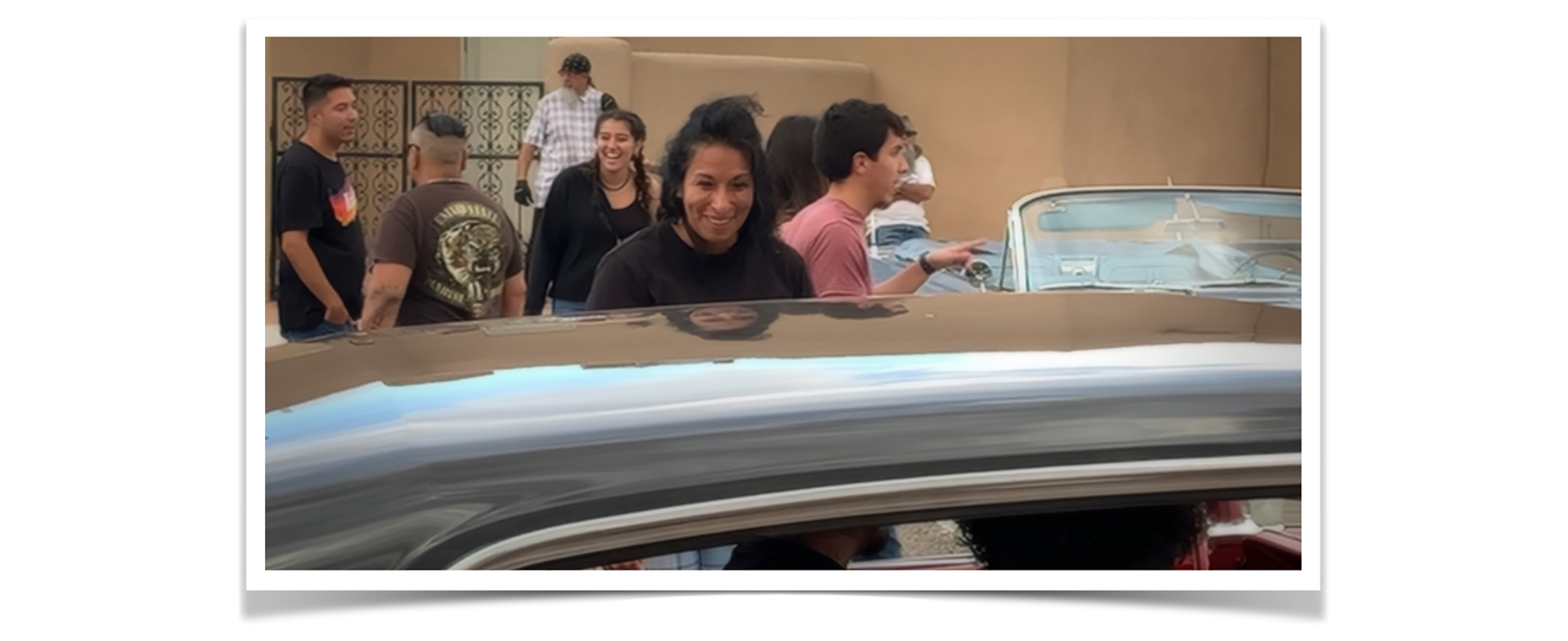Española, New Mexico . . .
Ten weeks have passed since I last reported on the course of the journey with the Gypsywagen. For 70+ days the GW and I have been comfortably ensconced at the hacienda of Don Luis Torres in the beautiful countryside just south of Española, New Mexico. Luis is the brother of my dear friend Robert Torres, whom I’ve known in Taos, New Mexico for most of the past dozen years. In May of this year, Luis invited me to stay on his land while I engage in the considerable finish work on the Gypsywagen. It was a welcome turn of events as the weather on the windswept mesa, where I originally built the coach, had become very forbidding. Also, after three rugged months last Fall, building the GW, and another four and a half months on a far flung “shakedown cruise”, I must confess I was worn out and ready to hunker down for awhile. Somewhere. Anywhere.

This interlude has been an unexpected pleasure. More than this, these days spent in this place further underscores the allure of simply wandering about the earth. There is much bounty in the people one meets and comes to know as way leads to way… in the sharing of the stories from respective lives, in the exchanges of experience, strength and hope, which carry forward in the hearts and minds of ourselves and those we’ve encountered. It’s a beautiful thing.
A few thoughts about Española. By reference, Santa Fe and Taos, New Mexico are known all over the world as centers of American Southwest culture and art. Many celebrated writers, artists and entertainers make their homes in these two cities, while people from all over the world come to experience the magic and the mystery of these iconic towns. On the seventy mile drive between Santa Fe and Taos lies the city of Española.
When first driving through Española, one gets the idea there’s not much to the place. It appears to be just another rough-hewn backwater with a Walmart and a Lowes, punctuated with a lot of fast-food joints. This perception is deceptive and veils the deep cultural layers, which exist as one comes to know the people and the history of this quintessential Hispanic city.
I emphasize Hispanic. As a native of Los Angeles, I grew up and lived most of my life in a context of Mexican and Chicano cultures. Though my grandparents came from Scandinavia and Northern Europe, I’ve always said that on a cultural level, I’m more Mexican than American. It’s an LA thing. But when I moved to Taos in 2007, I came to realize that the Hispanic culture of New Mexico is deeply rooted in Old Spain. This culture is historically and substantially different from the Chicano cultures of California, Arizona and Texas. Not being a scholar in these matters, I won’t try to take this theme much farther. But consider:

Española has the duel if not peculiar distinctions of being both the oldest capital city in America, and the “Lowrider” capital of the world. The city that became Española was founded as the capital of Nuevo Mexico in 1598 by Spanish conquistadors, twenty-two years before the Pilgrims landed at Plymouth Rock. And today, Española boasts more Lowrider automobiles per capita than any other place on Earth. (I happen to be a fan of Lowrider automobiles and consider them a genuine art form.) While Lowriders were first innovated in the 1940s Chicano culture of Los Angeles, the trend soon spread to other areas and cultures. By the 1990s, Lowriders became strongly associated with West Coast Hip-hop and G-Funk culture. The Hispanic culture of New Mexico, with Centuries-old traditions of fine coach making, adapted easily to modifying automobiles along these lines, further extending the art form.

Most importantly, Española is situated in a rich, agricultural valley, with the Rio Grande flowing through it. Many of the farms and the families who operate them go back to the 1600s. This is a different face of America. Not hip and slick and yes, there are serious drug problems among the local population in these times. But there’s also a cultural integrity and an Old World sense of dignity and community, which is the greater reality of this place. I value the days that I’m spending here and when the time comes to move on, I’ll do so with the hope of returning sometime in the future.
~


August 1, 2019 @ 8:56 pm
Beautiful writing man. I was there for a moment…
August 2, 2019 @ 12:25 am
I love your stories! I feel as though i am tight there with you. Thnks for sharing! Safe journey ole dear friend. Hugs Missy